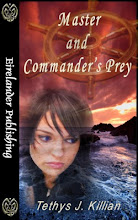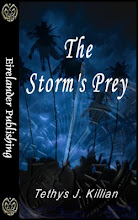They have existed for always it seems. From the myths and lore transmitted through word of mouth across generations, to the tales penned by authors with a quill and ink, and later through the medium of film as the visual strutted side by side with the written word.
Heroes have existed, as have heroines. Women and girls have gone through all these walks of life, recounting to us their struggles, their tales of romance and chivalrous men who wooed them and made them queens. Women have struggled through the confines society imposed on them, to emerge the victor, despite the fact that the struggle is far from won even today.
Yet, has this woman been the same throughout time? Has she changed, evolved, matured, or even, regressed?
What better way to capture this evolution than through stories and their heroines? Every age's tales reflects upon its womenfolk and brings her to light as the persona she encompassed in that era. Even today, when we pen a tale from a time we have not personally witnessed, we depict this heroine as she would have been in that set-up.
Let's take a more in depth look.
Stories rarely go beyond the year 1000. At the time of Crusades, in a world of knights and ladies and commoners, women are portrayed here as needing a man by their side, as nurturers, as wilting flowers. Mind you, there is strength in this woman, but she doesn't flaunt it. Virginity, especially among the higher realms of society, is a virtue, though liaisons and dalliances happened oftentimes after the lady was married and bedded by her husband on her wedding night.
Examples of such heroines (even from times before the first millenium): Queen Gorgo, wife of King Leonidas in 300; Princess Sybilla in Kingdom of Heaven; Evolet in 10,000 B.C.
You then move to the middle ages. The likes of Shakespeare abound here, with the young ingenue as the heroine. It has to be recalled that women were married and mothers here at the age of 12. Political alliances, marriages to merge big families, human lust and desire characterise the personalisation of romace in this age.
Examples of such heroines: Juliet from Romeo and Juliet; Queen Elizabeth 1 from Elizabeth; Viola de Lesseps in Shakespeare in Love.
Then comes the 1800s, the age of romanticism and society stories. The Civil War, the Napoleonic reign, the Regency - all fall into this period, though the Regency is more stringent on matters on proper society manners and conventions. The heroine in this time aspires towards a 'good' marriage, otherwise it's a life of drudgery as old maid, governess, or lady in waiting. There seems to be very little to motivate this heroine, but it's a wrong assumption. Rebellion is often characterised here. The heroine aspires for more, though she very rarely manages to break through the confines of the age. Again, virginity is highly valued. Women who have sex outside of marriage are viewed as 'fallen creatures', and the only action between the sheets happens after marriage. Even liaisons are shunned even more in this era.
A little observation to be made here - the period of 'libertinage' on the Old Continent around the turn of the century. Think Les Liaisons Dangereuses by Choderlos de Laclos.
Examples of heroines: Elizabeth Bennet from Pride and Prejudice; most Jane Austen heroines.
The rest of the century brings us the 'regular' historical heroine. Mostly set in England or America and the war between North and South, we have polarized heroines in this age. These women abide by the society rules, nurturers to a fault, or they throw it all by the window. Think Scarlett O'Hara v/s Melanie Wilkes.
Another contender in this bracket of time is the settlement of the American West stories, or Westerns as we know it. The rugged lands of the New World provide a harsh and often brutal backdrop against which heroines must live in the shadow of the men, the law-abiders or the outlaws. Women in this set-up are depicted as courageous, gritty, and not afraid. Still the nurturer, some break the mold. Think Calamity Jane, Ellen "The Lady" in The Quick and The Dead.
At the turn of the twentieth century, you have a heroine who is breaking the cocoon and trying to emerge as the free butterfly. Social conventions are being pushed aside and she is thinking about herself and her own happiness. A preclude to the women's liberation movement, in a way. Still bound by the corset though, but times are about to change as the Big War is lurking and women get their first shot at handling everything while the men are away fighting.
Examples: 1812 brought us Rose DeWitt Buckater in Titanic.
Despite all the evolution women meet in between 1913 to 1935, there aren't many stories to showcase this. Of course, fashion hasd changed. The corset has been ditched, hem lines are much shorter, undergarments are pretty much a thing of the past. The mindset has also evolved, more liberated. Rarely do we come across a heroine from that age though. It seems as if time just jumped to WWII and that's when you see more of this 'new' woman.
She has a job. She doesn't need to rely on marriage as her only avenue. She can choose her mate relatively without hindrance. She can decide to be an old maid and that's not an issue.
Examples of such heroines: Nurse Lt. Evelyn Johnson in Pearl Harbor; Kay Lake and Madeleine Linscott from The Black Dahlia.
From this point onwards, the heroine takes new avatars at every decade.
The 1950s brought a time of repression, in a way. Men are back from the war and women are expected to go back to domestic life. It often happens that women cede their places readily, but such is not the case always. There is a battle here between home life and the life of the working woman who takes her own decisions.
Examples: Cathy Whitaker in Far from Heaven; the posse of The Divine Secrets of the Ya-ya Sisterhood.
For all the 1960s brought the hippie movement forward, there aren't many hippie heroines. It is mostly the secondary characters who get saddled with this trend. The era probably brings to mind the sultry image of Marilyn Monroe. Family is still a driving force in this age, though there is much a shift in focus as to what the woman wants from her man.
Examples: Margaret "Maggie the Cat" Pollit in Cat On a Hot Tin Roof.
The seventies returned us to the classic wilting flower and the damsel in distress. The rise of Harlequin romances and Mills & Boon stories accounts for much of that.
The eighties, however, and the nineties too, sketch a curve away from the wilting rose and brings more power-hungry women. A career is not a thing that's scorned any longer, and men are meant to be enjoyed like candy. What a change in the mindset! From books to movies to the soap operas, the women take their destiny in hand and they are not afraid to show who and what they are.
Examples: Kristel Carrington & Alexis Carrington-Colby in Dynasty; Katharine Parker in Working Girl.
Another explosion here happens in the genres where women were not exactly present until then. Think sci-fi and paranormal. You can't have a wallflower there, and that's how strong heroines come to the forefront and take charge.
Examples: Ellen Ripley in Alien; Sarah Connor in the Terminator series.
From this springboard then come the heroines as we know them today. Wide and varied, strong in body or in mind and heart, funny and poignant - they have all evolved from the women who have led us through time and eras.
As always, I would love to have your comments.
 Aasiyah Qamar - Cultural romantic fiction, with a twist
Aasiyah Qamar - Cultural romantic fiction, with a twistWith stories set amidst the rainbow nation of Mauritius, a multicultural island in the Southern Indian Ocean, author Aasiyah Qamar brings you tales of today's young women battling life on all fronts and finding love where they least expect it. Indo-Mauritian culture wants to stifle them in traditions, customs and antiquated morals while the world is opening its arms of modernity and globalisation. Where do these women belong? And more importantly, with whom?Find out more about her first release, The Other Side, here.





.jpg)
.jpg)






4 comments:
Great observations, Z. Those heroines of the 80's turned my stomach. I loved Sarah Connor in the Terminator.
My favorite heroines in movies and books are the balanced ones - femininine but not doormats, strong but not gladiators.
Thanks Chicki.
It's amazing how much one can pick up about a tiem simply through observation of its womenfolk.
I personally do not favor the heroines of the likes of Ripley, but Katharine Parker in Working Girl struck me as an early version of the heroines as we know them today.
I agree with you on the favorite heroines. I also have a favor for the 'human' ones like Bridget Jones.
Thanks for the comment, darlin!
Hugs
Z(Aasiyah/Nolwynn)
Good post, Z. One of my favorite heroines was Scarlet. She was very strong for that time period.
You're right, Sandy. Scarlet was a heroine indeed! She hurled a lot of conventions, both social and writing-wise.
Thanks for the comment.
Hugs
Z(Aasiyah/Nolwynn)
Post a Comment